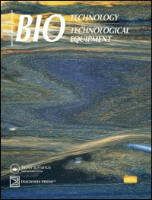
BIOTECHNOLOGY & BIOTECHNOLOGICAL EQUIPMENT
Scope & Guideline
Exploring the Frontiers of Biotechnological Research
Introduction
Aims and Scopes
- Biotechnological Applications:
Research articles often explore practical applications of biotechnology in agriculture, medicine, and environmental science, showcasing innovations that can lead to improved methods and products. - Molecular Biology and Genetics:
A significant focus on molecular biology techniques, including gene editing, genetic mapping, and the analysis of genetic diversity, reflects the journal's commitment to advancing genetic research. - Microbial Biotechnology:
The journal frequently publishes studies on the utilization of microorganisms in various processes such as fermentation, bioremediation, and the production of bioactive compounds, highlighting the role of microbes in biotechnological applications. - Analytical Techniques and Equipment:
There is a strong emphasis on the development and validation of analytical methods and equipment used in biotechnology, including biosensors and high-throughput screening technologies. - Environmental Biotechnology:
Research articles often address environmental challenges and solutions through biotechnological approaches, including waste treatment and sustainable agricultural practices.
Trending and Emerging
- CRISPR and Gene Editing Technologies:
There is a growing trend in the publication of studies related to CRISPR and other gene editing technologies, showcasing their applications in crop improvement and disease resistance. - Biopharmaceutical Development:
A noticeable increase in research related to biopharmaceuticals, including the development of novel drugs and therapeutic strategies, particularly in the context of COVID-19, signifies the journal's alignment with global health challenges. - Microbiome Research:
Emerging studies focusing on the role of the microbiome in health, agriculture, and environmental sustainability are increasingly prevalent, reflecting a broader interest in understanding complex microbial interactions. - Sustainable Biotechnology:
Research addressing sustainability in biotechnological processes, including biofuels, bioplastics, and bioremediation, is on the rise, indicating a shift towards environmentally friendly practices. - Artificial Intelligence in Biotechnology:
The integration of artificial intelligence and machine learning into biotechnological research and equipment development is emerging as a significant theme, showcasing the intersection of technology and biotechnology.
Declining or Waning
- Traditional Agricultural Biotechnology:
There has been a noticeable decrease in research focused on traditional agricultural biotechnology methods, such as conventional breeding techniques, as newer, more advanced genetic modification technologies gain prominence. - Basic Biochemical Studies:
Papers centered on basic biochemical pathways without direct applications to biotechnology or equipment are becoming less common, as the journal leans towards more applied research. - Single-Species Microbial Studies:
Research focused solely on single-species microbial studies, without broader implications for microbial consortia or ecosystem-level approaches, is declining, indicating a shift towards more integrative studies.
Similar Journals
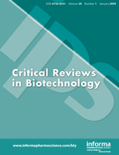
CRITICAL REVIEWS IN BIOTECHNOLOGY
Advancing the Frontiers of Biotechnology KnowledgeCRITICAL REVIEWS IN BIOTECHNOLOGY, published by Taylor & Francis Ltd, stands as a leading journal in the field of biotechnology, consistently recognized for its rigorous peer-reviewed articles that impact the disciplines of Applied Microbiology, Biotechnology, and Medicine. With an impressive Q1 ranking in these categories and a significant influence reflected in its Scopus rankings—placing it within the top 5% of Applied Microbiology and the top 4% of Biotechnology journals—the journal serves as an essential resource for researchers, professionals, and students alike. Launched in 1983 and extending its coverage to encompass groundbreaking findings through 2024, it provides a rich forum for insightful reviews and innovative research that propel the field forward. Though not an Open Access journal, CRITICAL REVIEWS IN BIOTECHNOLOGY remains a vital point of reference for ongoing developments, critical analyses, and emerging trends, making it indispensable for those seeking to stay at the forefront of biotechnological advancements.

Biotechnology and Genetic Engineering Reviews
Connecting Researchers and Trends in Genetic Innovation.Biotechnology and Genetic Engineering Reviews is a prominent journal published by Taylor & Francis Ltd, specializing in the rapidly evolving fields of biotechnology and genetic engineering. Since its inception in 1984, this journal has served as a critical platform for researchers and professionals to disseminate groundbreaking scientific findings, review methodologies, and discuss emerging trends within the domain. With a substantial track record of convergence in its publication history from various years, it currently holds Q2 rankings in both Bioengineering and Biotechnology, alongside a Q3 ranking in Molecular Biology for 2023. Its dedication to quality research is reflected in its Scopus rankings, which position the journal favorably within the competitive landscape of biochemistry and molecular biology. Although it is not an open-access journal, Biotechnology and Genetic Engineering Reviews remains committed to providing accessible insights to the global scientific community, making it an invaluable resource for students, academics, and industry professionals keen on advancing their knowledge in these crucial fields.

JOURNAL OF MICROBIOLOGY AND BIOTECHNOLOGY
Bridging Science and Application in MicrobiologyJOURNAL OF MICROBIOLOGY AND BIOTECHNOLOGY, published by the Korean Society for Microbiology and Biotechnology, is a premier academic journal based in South Korea that has been at the forefront of advancing knowledge in the fields of microbiology, biotechnology, and their applied sciences since its inception in 1991. This journal holds a commendable Q2 quartile ranking in key categories, including Applied Microbiology and Biotechnology, showcasing its significant impact within the academic community. With an emphasis on high-quality, peer-reviewed research, the journal aims to disseminate innovative findings that foster deeper understanding and advancements in microbial and biotechnological sciences. Researchers, professionals, and students utilize this journal to stay informed about contemporary developments and to inspire future investigations. Although it is not an open-access journal, its content is accessible through various academic libraries and databases, providing a vital resource for those engaged in cutting-edge research.

MOLECULAR BIOTECHNOLOGY
Pioneering Research in Biotechnology ApplicationsMOLECULAR BIOTECHNOLOGY, published by SPRINGERNATURE, is a pivotal journal in the fields of applied microbiology, molecular biology, biochemistry, and biotechnology. Since its inception in 1994, the journal has aimed to disseminate high-quality research that explores the intersection of molecular biology and technology, fostering advancements in biotechnology applications. With an ISSN of 1073-6085 and an E-ISSN of 1559-0305, it has established itself as a significant contributor to the scientific community, currently holding a Q3 ranking across multiple categories including Applied Microbiology & Biotechnology and Biochemistry in the 2023 metrics. Although not an open access publication, the journal remains accessible through various institutional subscriptions, providing valuable insights and findings to researchers and professionals. Given its ongoing commitment to quality and relevance, MOLECULAR BIOTECHNOLOGY serves as an essential resource for those involved in cutting-edge research and innovation in molecular biotechnology and related disciplines.

BIOTECHNOLOGY AND APPLIED BIOCHEMISTRY
Catalyzing Knowledge in Biotechnology and Biochemistry.BIOTECHNOLOGY AND APPLIED BIOCHEMISTRY, published by Wiley, is a renowned journal that bridges the gap between fundamental research and practical applications in the fields of biochemistry and biotechnology. With an ISSN of 0885-4513 and an E-ISSN of 1470-8744, this journal has been instrumental since its inception in 1986, focusing on diverse topics including applied microbiology, drug discovery, and process chemistry. The journal is currently recognized in various categories with impressive quartile rankings, showcasing its influence with placements in Q2 for applied microbiology, biotechnology, and biomedical engineering, among others. Researchers and professionals benefit from its comprehensive scope and critical insights into the latest advancements in these domains. Although not an open-access journal, it provides invaluable access options for academic institutions and professionals seeking to stay at the forefront of biotechnology innovations. Its commitment to presenting quality research facilitates the growth of knowledge and fosters collaborations across disciplines, making it an essential resource for anyone invested in the rapidly evolving landscape of biosciences.
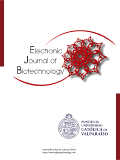
ELECTRONIC JOURNAL OF BIOTECHNOLOGY
Unlocking Knowledge in Applied Microbiology and BiotechnologyThe Electronic Journal of Biotechnology is a premier Open Access journal published by Pontificia Universidad Catolica de Valparaiso, Chile, dedicated to advancing the fields of applied microbiology and biotechnology. With its inception in 1998 and an unwavering commitment to sharing knowledge, the journal has garnered a respectable ranking within the Q3 quartile for both its biotechnology and applied microbiology categories as of 2023, reflecting its significance in the academic community. Researchers and professionals will find its editorial rigor complemented by a robust platform for disseminating innovative findings, fostering collaboration, and driving forward biotechnology discussions. Given its inclusive approach, having transitioned to Open Access in 2014, the journal ensures that research is accessible to a global audience, making it a valuable resource for students, academics, and industry practitioners alike. Through the publication of original research, reviews, and critical insights, the Electronic Journal of Biotechnology aims to bridge the gap between scientific discovery and practical application, ultimately contributing to advancements in health, agriculture, and environmental sustainability.
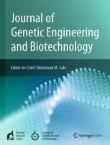
Journal of Genetic Engineering and Biotechnology
Catalyzing Innovations in Genetic Engineering and BeyondJournal of Genetic Engineering and Biotechnology, published by Elsevier Science Inc, is a prestigious open-access journal that stands at the forefront of research in the fields of biotechnology and genetics. Since its inception in 2011, the journal has provided a platform for cutting-edge studies that explore the complexities and innovations within genetic engineering and its applications in biotechnology. With a commendable Impact Factor and recognized as a Q2 journal in both biotechnology and genetics as per 2023 categorization, it ranks well within Scopus, evidencing its influence in the scientific community. Researchers and professionals accessing articles published in this journal benefit from timely contributions that bridge theoretical and practical aspects of genetic technologies. By fostering a collaborative environment, the Journal of Genetic Engineering and Biotechnology aims to promote advancements that drive science forward, making it an essential resource for students, academics, and industry practitioners alike. For those interested in making their mark in these rapidly evolving fields, this journal offers unparalleled access to high-quality, peer-reviewed research.
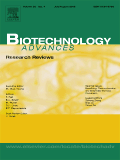
BIOTECHNOLOGY ADVANCES
Transforming Knowledge into Biotechnological AdvancesBIOTECHNOLOGY ADVANCES is a premier, peer-reviewed journal published by PERGAMON-ELSEVIER SCIENCE LTD, dedicated to advancing knowledge in the rapidly evolving fields of biotechnology and bioengineering. With an ISSN of 0734-9750 and an E-ISSN of 1873-1899, this esteemed journal covers a wide spectrum of topics relevant to applied microbiology, molecular biology, and biochemical innovation. Recognized for its academic rigor, it holds a distinguished position in the top quartile (Q1) in multiple categories, including Applied Microbiology and Biotechnology, Bioengineering, and Biotechnology, further evidenced by its high rankings in Scopus, where it ranks #3/127 in Applied Microbiology and Biotechnology and #7/311 in Biotechnology. Researchers and professionals in the field value the journal not only for its comprehensive coverage of cutting-edge research but also for its commitment to disseminating critical findings and fostering collaboration. While BIOTECHNOLOGY ADVANCES currently operates under a subscription model, its potential impact on future innovations in biotechnology cannot be overstated, making it an essential resource for anyone interested in the forefront of biotechnological advancements.
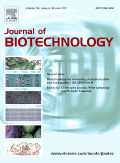
JOURNAL OF BIOTECHNOLOGY
Connecting researchers to shape the future of biotechnology.JOURNAL OF BIOTECHNOLOGY, published by Elsevier, stands as a premier platform in the fields of Applied Microbiology, Biotechnology, Bioengineering, and Medicine. With an ISSN of 0168-1656 and an E-ISSN of 1873-4863, this journal has significantly contributed to the advancement of biotechnological research since its inception in 1984 and continues to be a vital resource until 2024. Notably ranked in the Q2 quartile across multiple categories, it excels with impressive Scopus rankings, placing within the top 20% in Applied Microbiology and Biotechnology. This underscores its impact on both the scientific community and the ongoing developments in biotechnological applications. The journal encourages submissions that promote innovative research and practical insights, fostering collaboration among researchers, professionals, and students alike. Although it does not currently offer Open Access options, the journal remains highly regarded for its rigorous peer-review process and commitment to excellence in biotechnological literature.
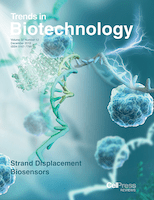
TRENDS IN BIOTECHNOLOGY
Pioneering Research for a Biotechnological FutureTRENDS IN BIOTECHNOLOGY, published by CELL PRESS, stands as a premier journal since its inception in 1983, focusing on the dynamic and ever-evolving fields of bioengineering and biotechnology. With a notable impact factor and ranking in the top quartile (Q1) of its categories for 2023, this journal is recognized for its contribution to advancing scientific knowledge, boasting a Scopus rank of #5/311 in Biotechnology and #5/162 in Bioengineering, placing it in the 98th and 97th percentiles, respectively. Although it does not operate under an open access model, TRENDS IN BIOTECHNOLOGY ensures a rigorous peer-review process that provides a platform for high-quality research that influences both academic and industrial advancements. The journal's objectives encompass the dissemination of cutting-edge research findings, reviews, and insights that foster innovation in biotechnological applications, making it an invaluable resource for researchers, professionals, and students alike. With its broad scope across the intersection of biosciences and technology, TRENDS IN BIOTECHNOLOGY continues to lead discussions and developments that shape the future of the biotechnology landscape.